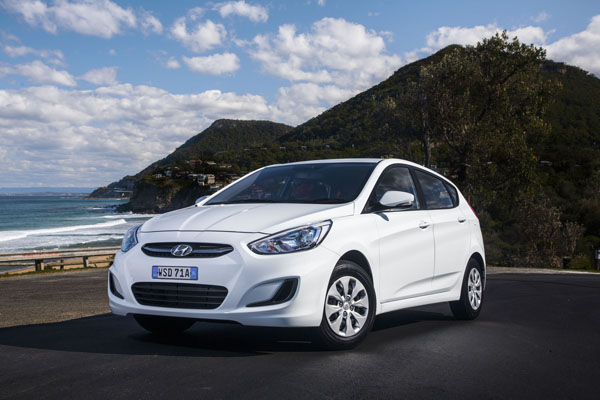
2012 Hyundai Accent Premium
Hyundai Accent was a popular seller in Australia from July 2011 onwards when the fourth
generation was launched. It had been reasonably well made prior to then, but real
improvements in quality were made at that time as the Koreans were rapidly becoming
known for the excellent way their cars were being made.
Hyundai was smart enough to do its research of the Australian market and realised that
drivers in this country are keen on the way their cars handle. So the Accent, and other
Hyundais, has Australian-developed suspension tuning.
We have seen Accents reach 200,000 km without any major problems. They had
obviously been driven sensibly and serviced by the book at Hyundai dealerships.
Ask to see the full service records to check where the work had been done and if it had
been done on time – either according to distance covered or the time the work had been
scheduled.
Keep in mind that cars used mainly for short trips should have had the work done on a
time, not distance, basis. In fact, engines that have been run cold for much the time on
numerous very short trips will wear out faster than those running big miles with the engine
at the best temperature.
These are relatively small cars but there’s good interior room for families with pre-teen
children. The boot is roomy and easy to use and has a good shape that’s simple to load.
Power comes from a naturally-aspirated petrol engine of 1.4, 1.5 or 1.6 litres, with the 1.6
being offered in two stages of tune, with a more powerful unit in the Sport model.
There’s also a 1.6-litre turbo-diesel which costs more but uses less fuel. This sort of
engine has never been popular in cars in Australia, but is well worth checking out if you’re
doing a lot of driving.
2014 Hyundai Accent SR
On trips on the open road, you can get fuel consumption under five litres per hundred
without having to put any special effort into your driving technique. Around town
consumption can rise quickly if you accelerate hard to keep up with other cars away from
the lights. So, forget about those silly drag races…
Hyundai Accent is offered with six-speed manual and an automatic transmission. Most of
the automatics are torque convertor units, but there’s a CVT unit in the 1.4 engine.
The Accent is a simple design and has good underbonnet space, so it’s quite easy to work
on. A lot of routine stuff can be done by a good home handyperson. Having a workshop
manual on hand is a smart move.
But always leave safety related items to the professional unless you really know what you
are doing.
Hyundai is a well-established in Australia. The dealer network is large and widespread.
There aren’t as many once you get away from the major cities, but the numbers are
increasing due to the ongoing popularity of Hyundais.
Insurance charges are moderate and there doesn’t appear to be a great deal of difference
between companies as to the premiums they charge.
Shop around but be sure you are doing a full apples-with-apples comparison before
making your final choice. Also remember that if you have a claim that may be marginal for
any reason the insurance company will respect long-term users of their product.
2016 Hyundai Accent Active
Accent was discontinued in April 2019 and effectively replaced by the Venue SUV as
Hyundai’s cheapest model.
WHAT TO LOOK FOR
Hyundai Accents generally hold up well on rough Australian roads, but listen for squeaks
and rattles from the body. Also, for trim movement inside the cabin during your test drive.
Look over the interior, including the boot, for signs of rough usage.
Check the engine starts promptly and idles smoothly. Ideally this should be done with the
engine cold after it’s been sitting overnight.
While travelling at a very low speed turn the steering wheel all the way from one side to
the other and listen for clunking noises near the front wheels. These probably mean the
universal joints are worn.
An automatic transmission that holds onto gears to long or skips up and down
unnecessarily, may be due for a major overhaul.
Feel for a manual gearbox that baulks during fast gearchanges, especially during the
three-two downchange.
HOW MUCH?
Expect to pay from $3000 to $6000 for a 2011 Hyundai Accent Active; $5000 to $9000 for
a 2012 Premium; $7000 to $11,000 for a 2015 Elite or a 2016 Active; $8000 to $13,000 for
a 2017 Active or a 2019 Sport; $9000 to $14,000 for a 2017 Sport; and $10,000 to
$15,000 for a 2019 Sport.
CAR BUYING TIP
Spend a lot of time shopping around for the type of car you’re thinking of buying – either at
yards or, online and to get a good idea of what problems are there.
RECALLS: To browse recalls on all vehicles go to the ACCC at:
www.productsafety.gov.au/products/transport/cars/